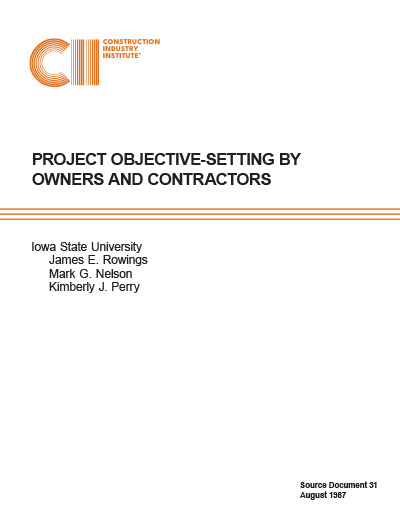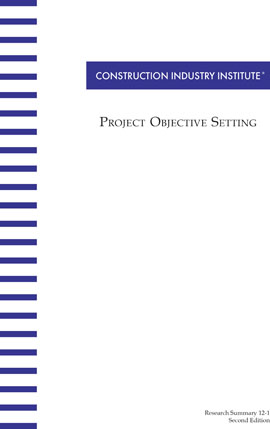
Project Objective-Setting by Owners and Contractors
Current capital facility construction projects are extremely complex and usually involve several organizations. Planning on such projects is paramount to success. The initial step in planning involves establishing objectives for the project. These objectives will guide numerous decisions throughout the project's life in the owner's, designer's, and constructor's organizations. The purpose of this study was to examine the objective-setting process used on several projects and identify the similarities and differences, evaluate the congruence of objectives, and develop testable hypotheses related to the objective-setting process.
The study included development of in-depth case studies of the objective-setting process which were compiled from a series of interviews with key management personnel associated with the projects. The projects examined included a gas production plant, an electric utility project, a paper mill, a research facility, and an automated warehouse. In addition, an extensive literature search and review was conducted to identify specific work which related to objective-setting.
The processes used in the five projects examined exhibited similarities and differences in the degree of formality and in the methods used to establish, monitor, control, and prioritize project objectives. The owner was the primary influence in the process of setting and communicating objectives. On successful projects there was good communication between project participants which led to congruency of objectives. The congruency was accomplished through the use of primary mechanisms and reinforcing mechanisms. Primary mechanisms are those methods or elements used to directly communicate objectives and include such items as written scopes of work, contracts and contract clauses, proposals, preconstruction meetings, and project objective letters. Reinforcing mechanisms support the communication process for objectives and help clarify priorities. Examples include fee incentive evaluations, weekly progress meetings, executive level reviews, project team office layout, and numerous types of management reports.
From these case studies over twenty hypotheses were developed related to the objective-setting process. These hypotheses all support the overall hypothesis that successful projects come about through a thorough, coordinated objective-setting process and through execution of the process, which promotes shared objectives of all project participants.


